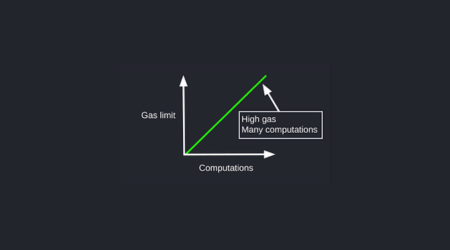Are you ready to revolutionize Storing Images on Ethereum blockchain?
Solidity, the programming language of choice, can help you securely store and retrieve images with ease.
In this article, we will guide you through the intricacies of storing images on the Ethereum blockchain using Solidity.
From understanding smart contracts to implementing image storage, we will cover all the necessary steps.
Get ready to explore the best practices and unleash the potential of image storage on the Ethereum blockchain.
1. Key Takeaways
- The Ethereum blockchain is a decentralized platform that offers secure and transparent storage and execution of smart contracts.
- Solidity is the programming language used for writing smart contracts on the Ethereum blockchain and understanding its basics is essential for storing images.
- Solidity programming enables advanced image storage techniques and seamless retrieval on the Ethereum blockchain.
- Storing images on the Ethereum blockchain provides data security, privacy, integrity, and ensures image authenticity.
2. The Ethereum Blockchain: An Overview
The Ethereum blockchain is a decentralized platform that allows for the storage and execution of smart contracts. It is a revolutionary technology that has numerous applications beyond just cryptocurrency.
One of its key advantages is decentralized storage, which means that data is not stored in a single location, making it less vulnerable to hacking or data loss.
To fully understand how to store images on the Ethereum blockchain, it is essential to have a grasp on Solidity, the programming language used for smart contracts.
3. Understanding Solidity: The Programming Language
In this discussion, you’ll gain a comprehensive understanding of Solidity, the programming language used for developing smart contracts on the Ethereum blockchain.
First, you’ll learn the basics of Solidity, including its syntax, data types, and control structures.
Then, you’ll explore practical examples of Solidity programming, allowing you to see how the language is utilized to create smart contracts for various applications.
I. Solidity Basics Explained
Let’s start by understanding the basics of Solidity.
Solidity is a programming language specifically designed for writing smart contracts on the Ethereum blockchain. It has various data types such as integers, booleans, strings, addresses, and more. These data types allow you to define and manipulate variables in your contracts.
Additionally, Solidity provides function modifiers. These modifiers allow you to add conditions or restrictions to your functions. They ensure that certain requirements are met before executing the function.
Understanding these concepts will help you grasp the upcoming Solidity programming examples effortlessly.
II. Solidity Programming Examples
To create smart contracts on Ethereum, you can leverage the power of Solidity’s programming examples. Solidity is a programming language specifically designed for writing smart contracts on the Ethereum blockchain.
It offers a wide range of features and functionalities to address various programming challenges. By studying Solidity programming examples, you can gain a deeper understanding of the language and learn advanced image storage techniques.
These techniques will be essential in the subsequent section, where we explore storing images on the Ethereum blockchain.
4. Storing Images on Ethereum Blockchain
You can store images on the Ethereum blockchain using Solidity. By implementing image compression techniques, you can optimize the storage and retrieval of images, making it efficient and cost-effective.
Decentralized image galleries can be created by leveraging smart contracts to store the image metadata, such as the image hash, timestamp, and owner information. These galleries provide a secure and transparent way to share and access images on the blockchain.
In the next section, we will explore how smart contracts enable seamless image storage and retrieval.
5. Smart Contracts and Image Storage
When it comes to storing images on the Ethereum blockchain, there are a couple of key points that you need to consider.
First, data security concerns are a major factor to take into account. With the increasing number of cyber threats, it is crucial to ensure that the images stored on the blockchain are protected from unauthorized access or tampering.
Additionally, the cost of storing images on the blockchain is another important aspect. As blockchain technology is still evolving, the cost associated with storing large files such as images can be relatively high, especially considering the limited storage capacity of the Ethereum network.
I. Data Security Concerns
Ensure your images are stored securely on the Ethereum blockchain to address data security concerns. To achieve this, consider the following:
- Implement image encryption techniques to protect the privacy and integrity of your data.
- Utilize decentralized storage solutions to distribute your image files across multiple nodes, reducing the risk of single points of failure.
- Leverage the immutability and transparency of the Ethereum blockchain to ensure the integrity and authenticity of your stored images.
Now, let’s explore the cost associated with storing images on the Ethereum blockchain.
II. Cost of Storing Images
The cost of storing images on the Ethereum blockchain can vary depending on factors such as network congestion and gas fees. These costs can be calculated based on the size of the image and the current gas price.
Below is a table that showcases the estimated costs for storing various image sizes.
It’s important to consider these costs before proceeding with the image retrieval process, which will be discussed in the next section.
Now, let’s explore how you can implement image storage with Solidity.
6. Implementing Image Storage With Solidity
To implement image storage with Solidity, you can use the IPFS protocol. This allows for efficient storing and retrieval of images on the Ethereum blockchain.
When storing images, consider using image compression techniques to reduce their size and optimize storage space.
For retrieving images, there are various methods available such as using unique identifiers or metadata associated with each image.
By implementing these techniques, you can ensure efficient and secure image storage on the Ethereum blockchain.
Now let’s explore the best practices for image storage on the Ethereum blockchain.
7. Best Practices for Image Storage on the Ethereum Blockchain
By implementing these best practices, you can efficiently and securely store and retrieve images on the Ethereum blockchain. To ensure data encryption, use cryptographic algorithms such as AES or RSA to encrypt the image before storing it on the blockchain.
Additionally, employing image compression techniques like JPEG or PNG can help reduce the storage size and gas costs. Consider the following table to understand the benefits of data encryption and image compression:
| Best Practice | Benefits |
|---|---|
| Data Encryption | – Enhanced security |
| – Protection against hacks | |
| Image Compression | – Reduced storage size |
| – Lower gas costs | |
| – Faster retrieval |
Implementing these best practices will not only safeguard your images but also optimize the storage and retrieval process on the Ethereum blockchain.




